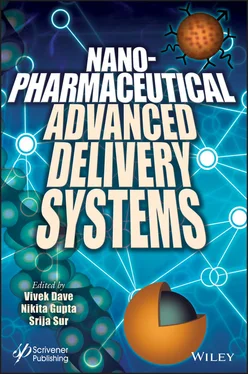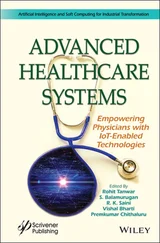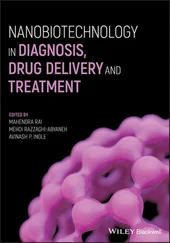2.4 Modes of Transport of Nanoparticulate Carriers
Nanocarriers have the capability to cross the different biological barriers via various routes as shown in Figure 2.2a. The fate of nanoparticle is decided upon reaching the circulation either through lymphatic system or hematogenous system. The nanocarriers can be transported both actively and passively across the membranes in the body. Surface modified nanocarriers decorated with ligands/antibodies that bind to specific receptors expressed on the cell surface especially in cancer/tumor and deliver the selectivity of drug delivery is called active targeting of nanocarriers [103]. The intrinsic imbalance of the angiogenic receptors and growth factors results in disorganized cell surface with leaky vasculature and compromised lymphatic drainage resulting in enhanced permeability and retention effect (EPR). Nanoparticles with molecular weight above 50 kDa can undergo enhanced EPR effect and passively accumulate in the tumor cells. Further, nanocarriers with size and surface modified to provide prolonged circulation time (PEGylated nanocarriers) escape capture by reticuloendothelial system and deliver drugs passively [104, 105].
Dube et al . [106] have elaborately discussed various techniques for active and passive targeting of nanoparticulate carriers in tuberculosis in Figure 2.2b. Passive targeting in pulmonary tuberculosis is particularly possible via inhalation, since particles possess size (~5 μm) adequate enough to be engulfed by alveolar macrophage. This passive targeting is possible because of the natural propensity of the macrophages to engulf particles. Drugs are passively delivered in extrapulmonary TB via inhalation, intravenous, and oral routes. Once in blood circulation, the nanocarriers are easily taken up by phagocytic cells of the mononuclear phagocyte system (MPS) [107]. Further, PEGylation of drug carriers prolongs the half-life of nanoparticulate carriers [108].
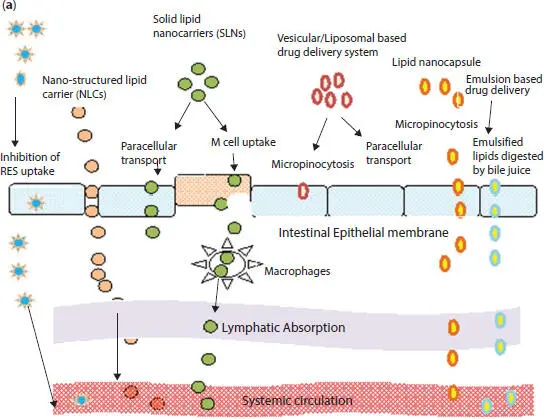
Figure 2.2a Mechanism of transport of nanocarriers across various biological barriers.
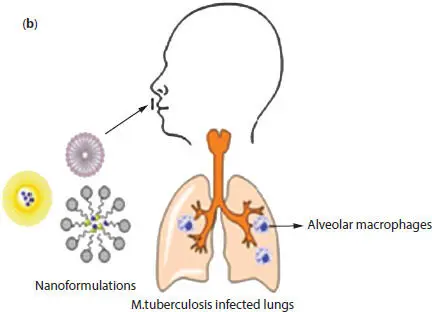
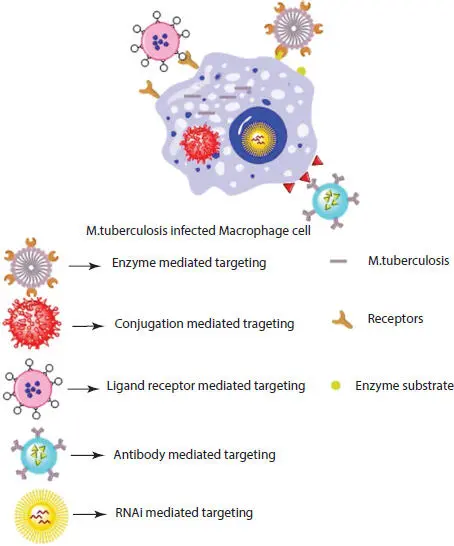

Figure 2.2b Mechanism of drug delivery in tuberculosis. (i) Delivery of nanoparticulate carriers to lungs passively via dendritic cell or macrophages
As discussed already, active targeting of nanocarriers is possible by engineering the surface of these carriers with cell-specific ligands including proteins, peptides, polysaccharides, glycolipids, glycoproteins, monoclonal antibodies, etc. such that drug is delivered to the pathologic sites or crosses biological barriers through molecular recognition. Targeted nanocarriers can potentially differentiate between the healthy and infected cells via expression of cell surface receptors, and hence, cell-specific active binding of nanocarriers takes place.
Nanoscale approaches used for delivery of drugs and diagnosis of diseases have revolutionized the treatment regimens used for life-threatening diseases. The nanoparticulate drug carriers provide multifunctional platforms that can be tailor-made to suit the requirements of the disease and the patient. Like any other technology, nanotechnology-based approaches also require a lot of precision and care in their use. Extensive studies, however, need to be carried out to exploit their full potential to our advantage. The nanoparticulate carriers have been studied in almost every disease, and extensive commercial exploration is happening globally in biological, medical, and diagnostic fields. Majority of the companies are involved either in large-scale manufacturing of semiconductor-based quantum dots for diagnostic or ceramic-based nanoscaffolds for tissue engineering or orthopedic applications. Clinical applications of ligand targeted nanoparticulate carriers containing anticancer drugs have been highly successful in comparison to other diseases. Also, nanoparticulate carriers have invested confidence in clinicians for the treatment of brain disorders, which were conventionally considered as untreatable due to poor availability of drugs in the cerebral region because of the presence of blood brain barrier.
The therapeutic success of nanocarriers can be estimated from the growing market presence of nanoparticulate formulations like Megace ES (Enhanced Stability), Estrasorb (estradiol topical emulsion), and Triglide (nanocrystal formulation of Tricor). Also, surface engineered nanoformulations of doxorubicin and taxol are being used clinically because of their longer half-lives and reduced side effects [109]. Food and Drug Administration (FDA) has also issued several guidance documents for application of nanotechnology or nanomaterials to FDA-regulated products as part of its ongoing FDA’s Nanotechnology Task Force Report, 2007.
1. Mishra, M., Kumar, P., Rajawat, J.S., Malik, R., Sharma, G., Modgil, A., Nanotechnology: Revolutionizing the Science of Drug Delivery. Curr. Pharm. Des. , 24, 5086–5107, 2019.
2. Suri, S.S., Fenniri, H., Singh, B., Journal of Occupational Medicine Nanotechnology-based drug delivery systems. J. Occup. Med. Toxicol. , 2, 1–6, 2007.
3. Patra, J.K., Das, G., Fraceto, L.F. et al. Nano based drug delivery systems: Recent developments and future prospects. J. Nanobiotechnol., 16, 71, 2018.
4. Jeevanandam, J., Barhoum, A., Chan, Y.S., Dufresne, A., Danquah, M.K., Review on nanoparticles and nanostructured materials: History, sources, toxicity and regulations. Beilstein J. Nanotechnol. , 9, 1050–1074, 2018.
5. Bedi, D., Musacchio, T., Fagbohun, O.A., Gillespie, J.W., Deinnocentes, P., Bird, R.C., Bookbinder, L., Torchilin, V.P., Petrenko, V.A., Delivery of siRNA into breast cancer cells via phage fusion protein-targeted liposomes. Nanomedicine Nanotechnology. Biol. Med. , 7, 315–323, 2011.
6. Mubin, N., Saad Umar, M., Zubair, S., Owais, M., Selective targeting of 4SO4-N-acetylgalactosamine functionalized mycobacterium tuberculosis protein loaded chitosan nanoparticle to macrophages: Correlation with activation of immune system. Front. Microbiol. , 9, 2469, 2018.
7. Malik, A., Gupta, M., Mani, R., Bhatnagar, R., Single-dose Ag85b-ESAT6–loaded poly(Lactic-co-glycolic acid) nanoparticles confer protective immunity against tuberculosis. Int. J. Nanomedicine , 14, 3129–3143, 2019.
8. Sharma, R., Raghav, R., Priyanka, K., Rishi, P., Sharma, S., Srivastava, S., Verma, I., Exploiting chitosan and gold nanoparticles for antimycobacterial activity of in silico identified antimicrobial motif of human neutrophil peptide-1. Sci. Rep. , 9, 1–14, 2019.
9. Lee, C.N., Wang, Y.M., Lai, W.F.T., Chen, T.J., Yu, M.C., Fang, C.L., Yu, F.L., Tsai, Y.H., Chang, W.H.S., Zuo, C.S., Renshaw, P.F., Super-paramagnetic iron oxide nanoparticles for use in extrapulmonary tuberculosis diagnosis. Clin. Microbiol. Infect. , 18, 149–157, 2012.
10. Mignani, S., Tripathi, R.P., Chen, L., Caminade, A.M., Shi, X., Majoral, J.P., New ways to treat tuberculosis using dendrimers as nanocarriers. Pharmaceutics , 10, 105, 2018.
Читать дальше
